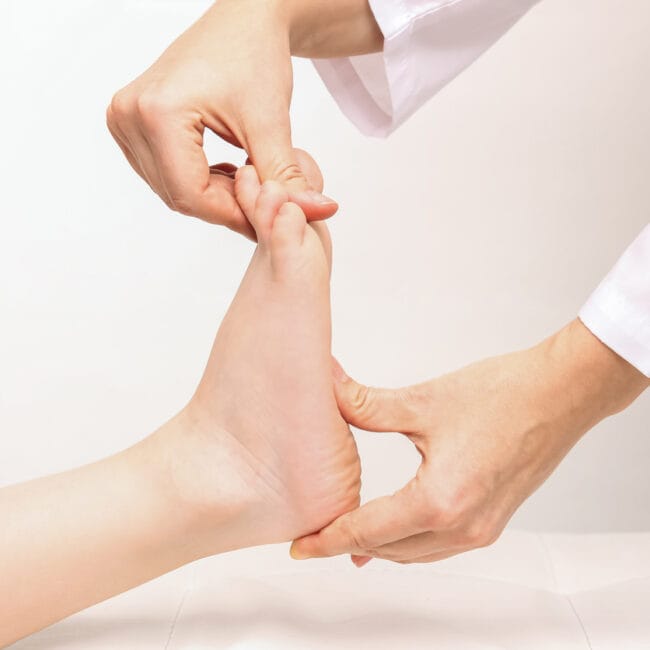A foot ulcer is an open sore on the foot, usually beneath the big toe or on the balls of the feet. They form when skin tissue breaks down and exposes the lower layers. They begin as a sort of shallow crater, but if left untreated, this can extend into the deeper layers, possibly even reaching the bone.
Foot ulcers most commonly occur in people who have poor circulation. Diabetics in particular have a high risk of developing foot ulcers, especially if their diabetes is not being properly managed. Due to the fact that foot ulcers form because of bad circulation, this also means that they can be slow or difficult to heal. An untreated foot ulcer can lead to many other problems, such as the formation of an abscess, the spread of infection, and even gangrene.
While we don’t want to cause any panic in readers who may suspect that they have a foot ulcer, it is very important for us to state that, according to the Harvard Medical School, the majority of diabetics who undergo a foot amputation do so because they acquired an infection through a foot ulcer. Therefore, it is absolutely essential that you tackle a foot ulcer head on as soon as possible.
The earliest signs that you may be getting a foot ulcer are leakage from your foot, which may become apparent on your socks or shoes, swelling, redness, and irritated skin. But these signs can be easily missed, and the first highly noticeable sign of an ulcer is the presence of eschar, which is a dark, dry scab of dead skin that forms due to a lack of blood flow. This may not always be a visible sign, and in many cases, it is only when the area becomes infected that the presence of a foot ulcer is identified.
The number one priority in treating a foot ulcer is fighting the infection. In order to do this as effectively as possible, some of the tissue from the ulcer may be sent for analysis in a lab to help determine which antibiotics will work best for you. In some cases, anti-clotting medication may also be used.
Once you leave the doctor, there are several things you will have to do to fight the ulcer apart from taking medication. Your doctor will tell you your exact treatment plan depending on the specifics of you case, but it is likely to involve creams that contain silver sulphadiazine or polyhexamethylene, iodine, footbaths, and regularly redressing the wound. Your doctor is also likely to recommend several lifestyle changes to help the ulcer heal, and prevent the formation of future ulcers. This can include wearing diabetic shoes, compression wraps, or shoe inserts to alleviate some of the pressure and friction experienced by your feet. If you have any other medical conditions in the area, such as hammertoe, these are also likely to be addressed.
While nobody likes the idea of having an ulcer, many people underestimate the dangers they can pose. People think of ulcers as a type of pimple, or put them on par with the likes of corns and calluses. But foot ulcers are a lot more serious than any of those, and can have major implications for your health and quality of life. So whether you’re the kind of person who runs to the doctor at the first sign of a cold, or the kind who thinks “It will probably be fine”, the response to a suspected foot ulcer should always be the same: go seek professional help, and sort it out as soon as possible.














